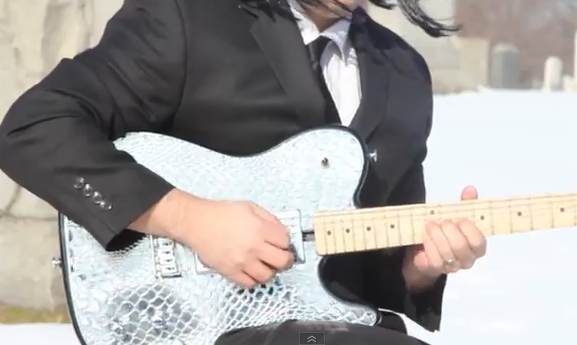Many guitarists use tablature to find out how to play their favorite songs. Guitar tabs are easy to read and understand when you know what everything means and once you get the hang of it. It’s also a good idea to choose a tab for a song that’s at your playing level, because even though you may have all the music in front of you, you still might not be able to pull it off if it’s an advanced piece and you’re a beginner.
Another good idea is to find a good-quality tab to use, one that maybe has higher ratings than others so you can be sure it’s more accurate, and also one that was tabbed correctly. Sometimes people submit tabs that are missing information, or that are very vague, and these are going to be harder for you to learn from. Now, to get started playing tab guitar songs, all you’ll need are your guitar and the tab!
First, you’ll notice the tab has the open strings labeled, starting with the high E string at the top (e) and the low E at the bottom (E). This mirrors your actual guitar when you’re looking at it from above while playing, so it’s a good way to visualize the notes. The numbers represent the frets to play on each string, and you read it left to right, like you would read anything else. If two numbers are on top of each other, or on the same vertical, it means they are to be played simultaneously. To spot chords, you’ll notice them easily this way.
Another good organizational method for tabs are the vertical bars which you might notice stand for bars or measures. Any good tab will have these so you know where you are in the song. Without them, it’s easy to lose track. For acoustic songs or songs that mainly use chords, sometimes the name of the chord is simply written above the measures so you know when to change. You’ll notice this in the example tab from “Mood for a Day” by Yes.
Finally, a good tab guitar song will usually include some extra information regarding palm-muting, hammer-ons, pull-offs, slides, and others. Slides are represented by a slash (“/” when sliding up or “\” when sliding down), hammer-ons by “h” and pull-offs by “p” (these usually are written next to the fret numbers or right above the numbers, depending on who’s tabbing it), and palm-muting by “pm” with dashes that show for how long you should palm-mute.
While tabs are great for learning new songs, it would also be a good idea to learn to read music as well, or play songs by ear. Everything you learn will only help you in your quest to becoming a great guitar player.
If learning songs on guitar is your goal, I recommend you to check out these courses:

